The Palais de l’Île is the first image that comes to my mind when I think of Annecy.
Standing proudly in the heart of the old town, this timeless silhouette on its rocky island in the middle of the Thiou River is not just one of France’s most photographed sights—it’s also a treasure trove of history waiting to be explored.
I’ve walked past it countless times, often stopping on the Pont Perreire to capture its beauty in every season.
But few tourists realise that stepping inside is like unlocking the secrets of Annecy’s rich past.
Let me take you on a journey through this enchanting place, weaving together its stories and my own personal connection to this extraordinary monument.
The Palais de l’Île: A Journey Through Time
The Palais de l’Île has stood sentinel since the 12th century, its fortified walls bearing witness to centuries of change.
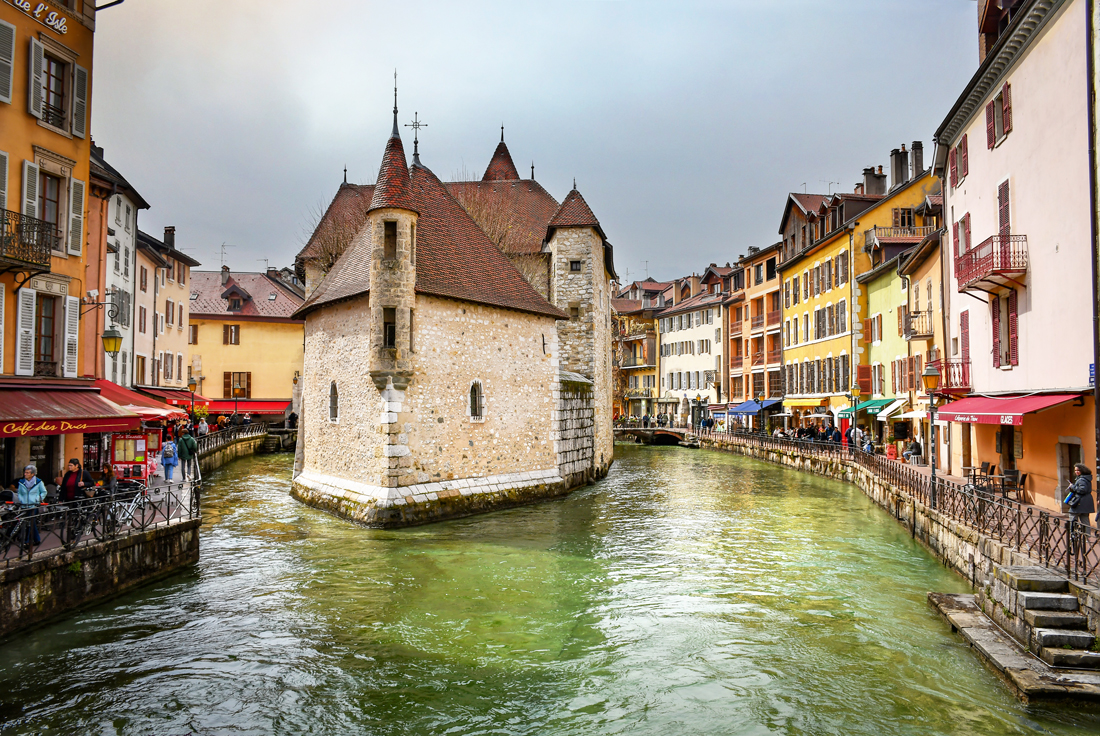
The first recorded mention of this stone “ship” dates back to 1325, when it served as a prison.
Imagine the feudal lord of Annecy paying Jean de Monthoux, the island’s master, to feed two prisoners held within these walls.
Over the decades, its purpose evolved, reflecting the shifting tides of history.
In the 14th century, it became a coin-minting workshop under the authority of Count Amadeus III of Geneva.
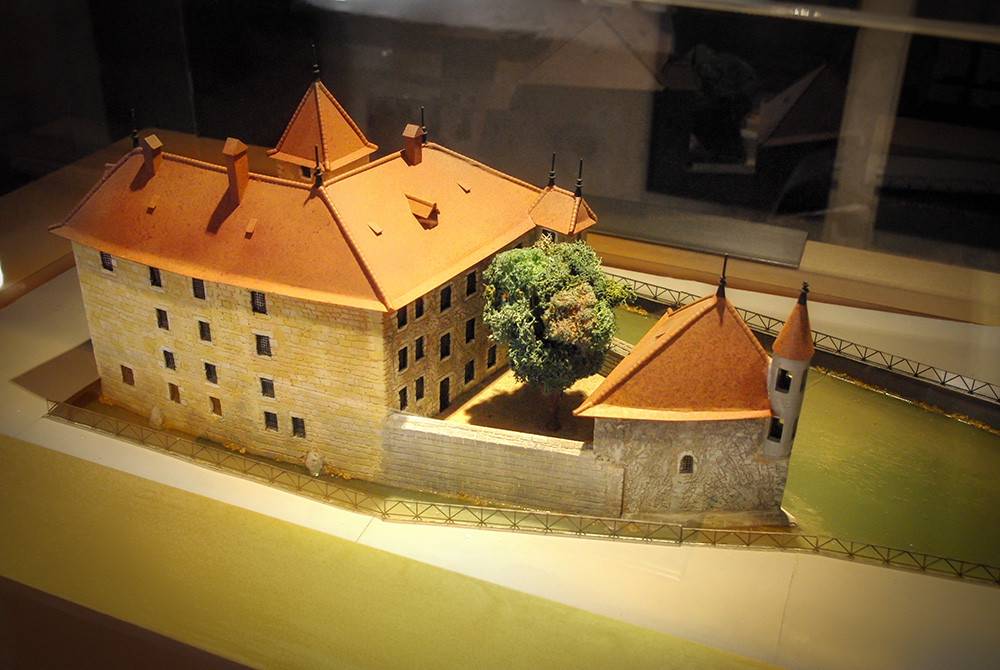
For nearly a century, the clang of metal on metal would have echoed through its halls.
Later, as the Genevois province was absorbed into the Duchy of Savoy, the castle changed hands, eventually becoming the property of the Dukes of Savoy.
Among its notable residents was François of Luxembourg, who lived here with his wife Louise of Savoy and their son, François II.
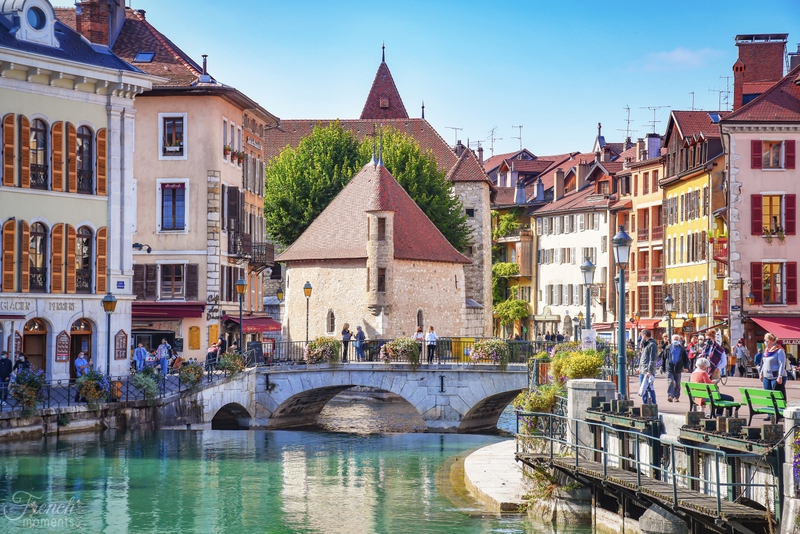
By the 16th century, the Palais de l’Île served as a courthouse and prison, roles it would retain for centuries.
During the French Revolution, its cells were overcrowded with prisoners, a grim testament to its enduring function.
It narrowly escaped demolition in the 19th century, saved by its designation as a Historical Monument in 1900.
Even during World War II, it returned to its roots as a prison.
Today, after extensive restorations, it houses the Architecture and Heritage Interpretation Centre, inviting visitors to step back in time.
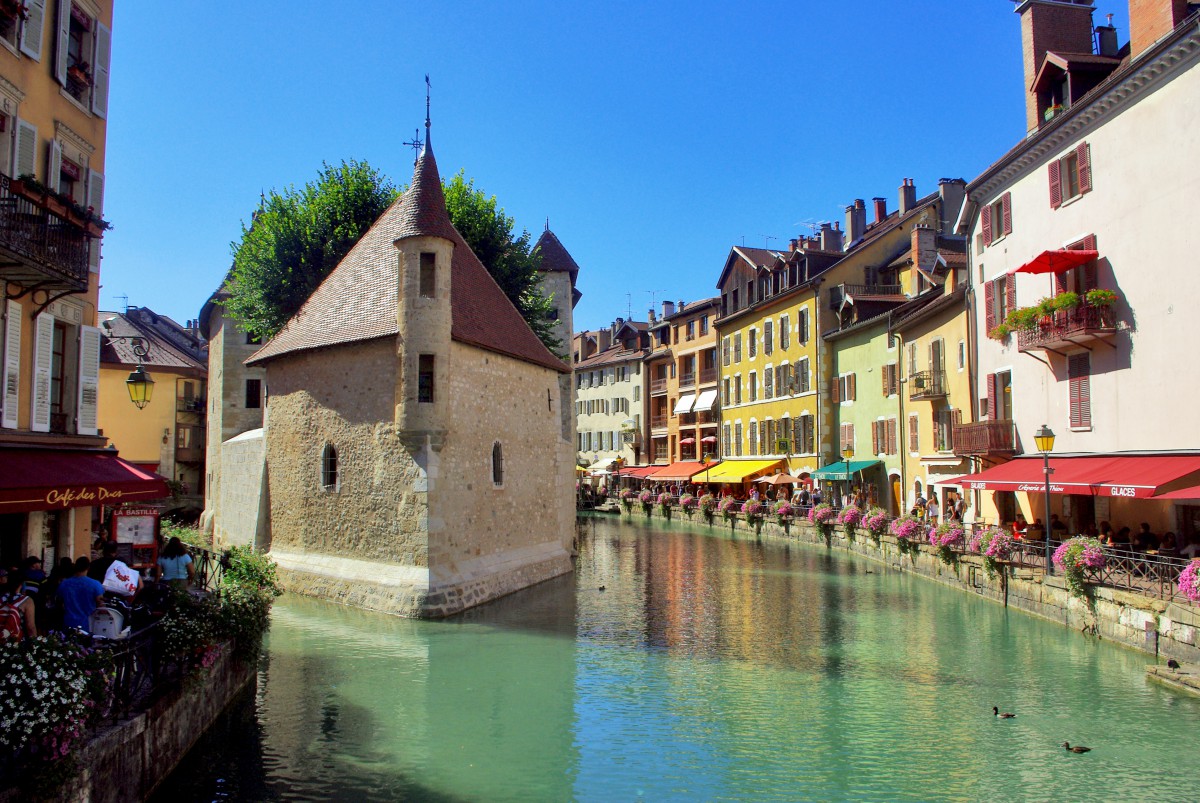
Exploring the Palais de l’Île
Walking through the Palais de l’Île is like peeling back layers of history.
The structure follows the contours of the Thiou River, and its oldest section, the Tower-Lodge, dates back to the 12th or early 13th century.
Here, exhibitions delve into the urban history of Annecy, offering glimpses into its evolution.
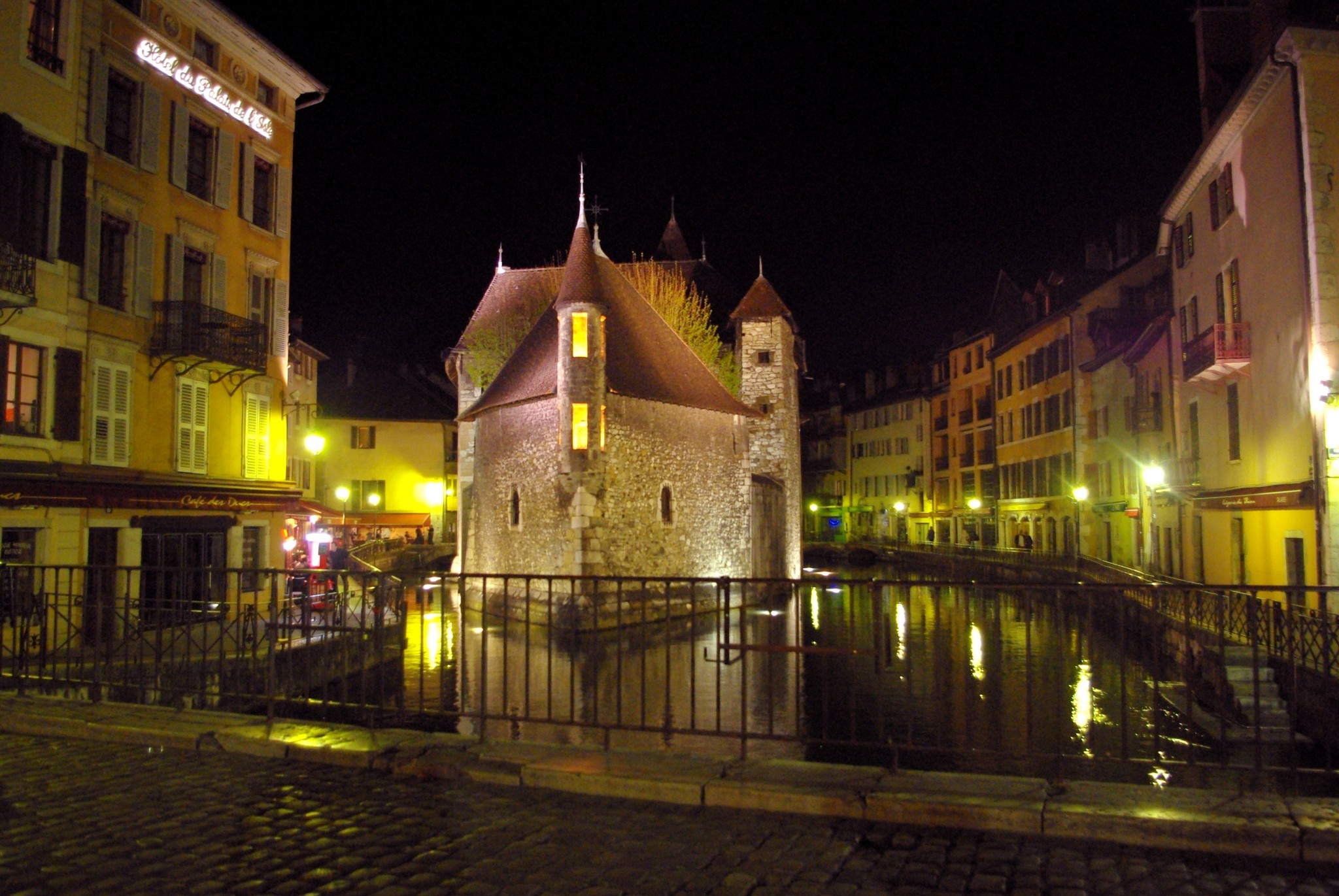
The Entrance Courtyard
The entrance courtyard sets the tone, flanked by a quadrangular tower with a spiral staircase.
To the left lies “The Banches,” where lawyers once worked, negotiating contracts and resolving disputes.
On the right is the Coin Mint Wing, a testament to the castle’s economic significance in medieval times.
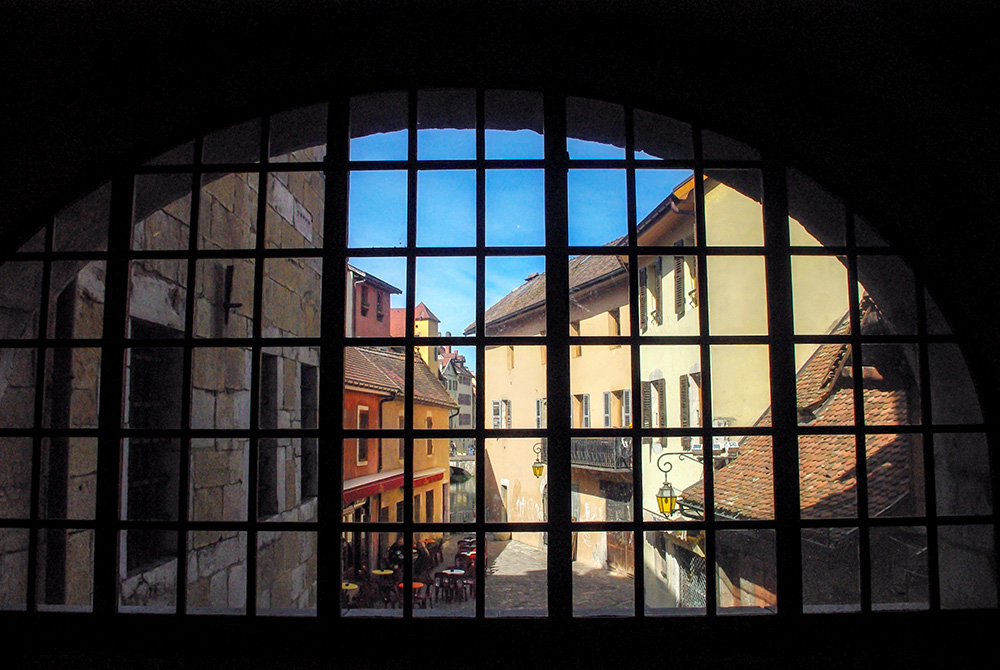
The Coin Mint Wing
Built with large blocks of rock, this wing stretches along the river’s edge. Inside, vaulted rooms hint at its former life. The gaoler’s kitchen and the royal office now serve as entry points for visitors, offering a tangible connection to the past.
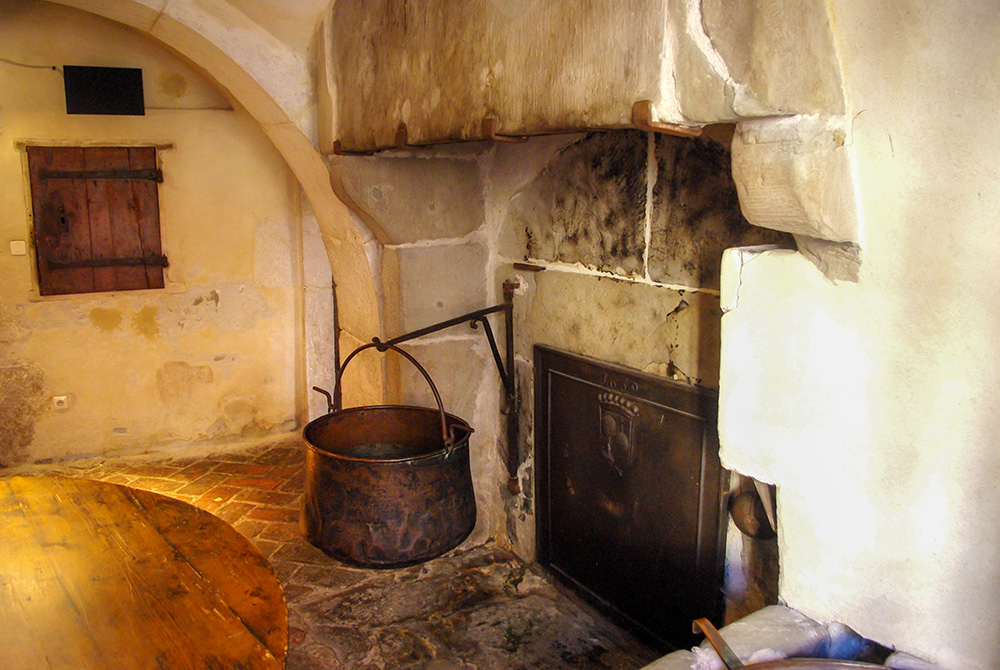
The Tower Lodge
Separated from the Coin Mint Wing by a corridor, the Tower Lodge once housed justice.

On the first floor, judges interrogated criminals in austere hearing rooms, flanked by prison cells.
These spaces, now part of the museum, feature panels detailing Annecy’s history.
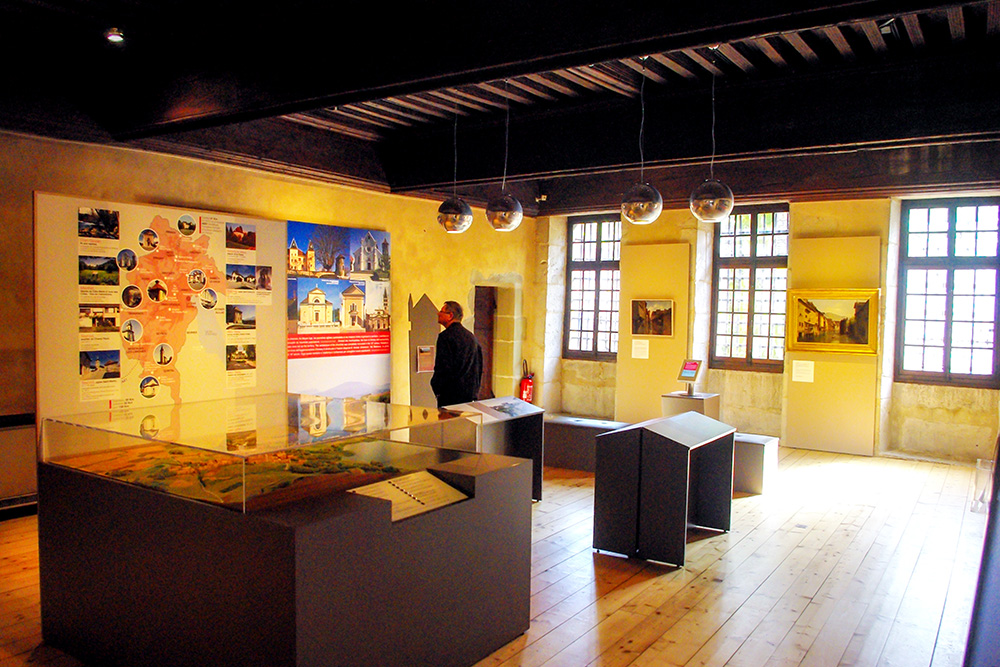
One quirky detail stands out: a tombstone placed upside-down above a latrine—a curious nod to the castle’s layered past.
On the upper floors, you’ll find the Archives Room, where suspended shelves protect documents from damp and rats.
The spiral staircase, added in the 15th century, links these floors, adding a touch of medieval charm.
The Dungeons
The dungeons offer a sobering glimpse into the harsh realities of imprisonment.
Situated on the ground floor, four cells line the riverbank.
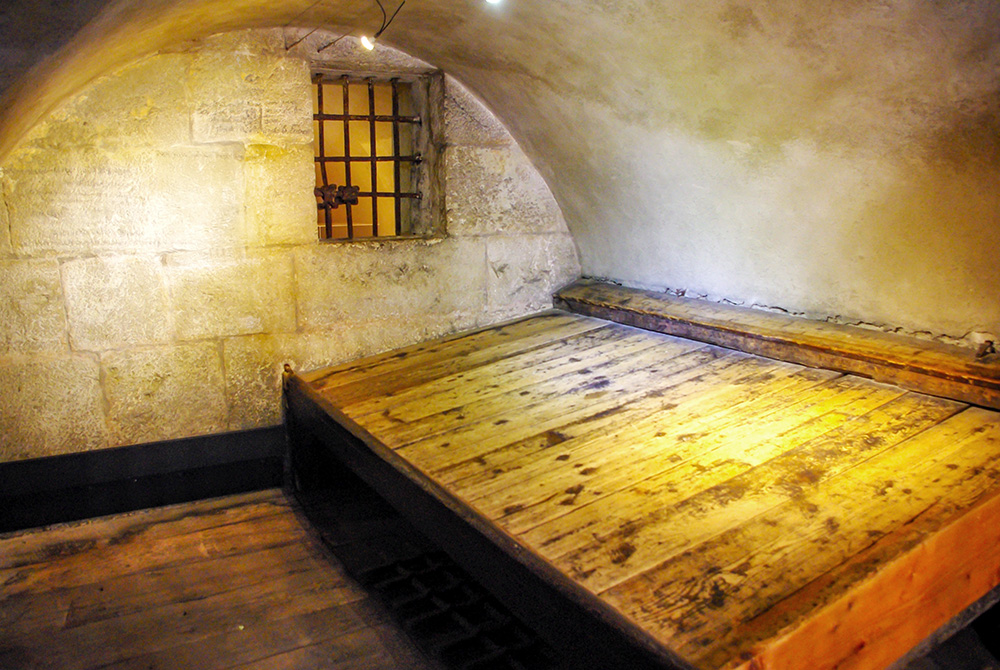
Men, women, and even children were confined here, often for minor crimes.
The island’s isolation made escape nearly impossible.
During the Revolution, over a hundred prisoners crowded these cells at once.
By 1864, the site’s prison function was relocated, though its shadowy past lingers.
The Inner Courtyard and Chapel
The inner courtyard separates the lodge from the former chapel, a tranquil space steeped in history.
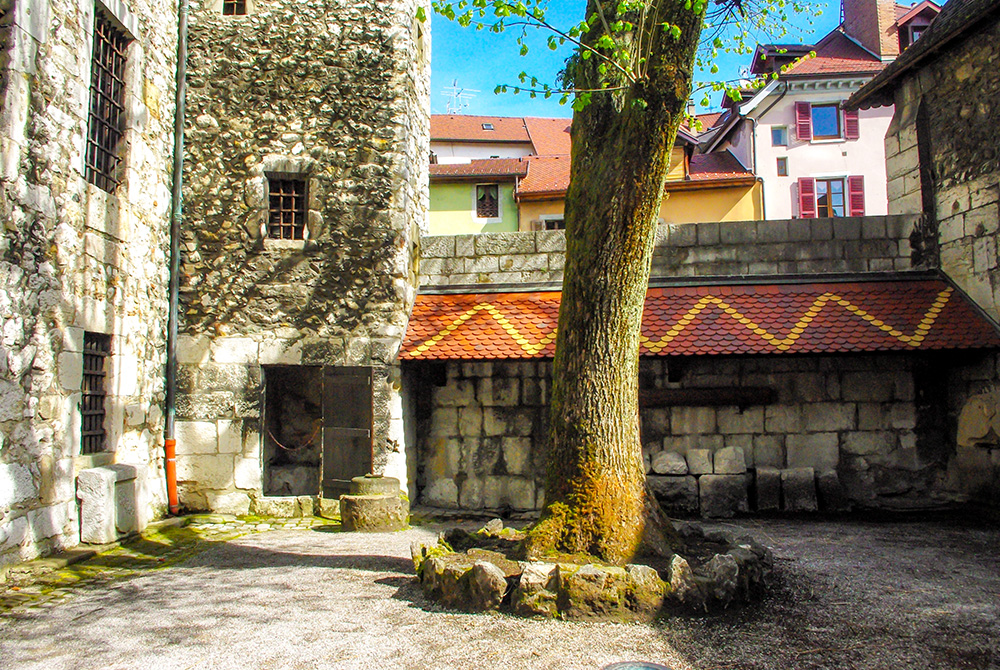
The chapel itself, triangular in shape, once served Annecy’s Orthodox community.
Nearby, the tombstone of Jean-Baptiste Simond, a judge and friend of Jean-Jacques Rousseau, adds a touch of literary intrigue.
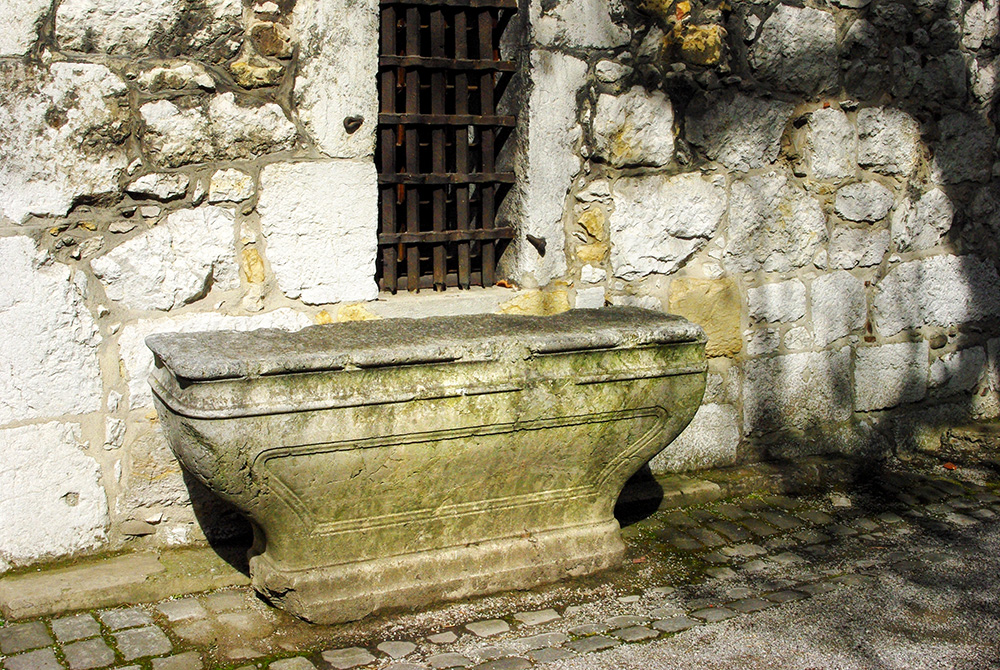
The Palais de l’Île Today
Crossing the footbridge to the Palais de l’Île, you’re greeted by the CIAP museum’s exhibitions.
These displays bring Annecy’s urban history to life, blending artefacts, audiovisual presentations, and architectural insights.
A combined ticket allows visitors to explore both the Palais de l’Île and Annecy Castle, offering a comprehensive dive into the region’s heritage.
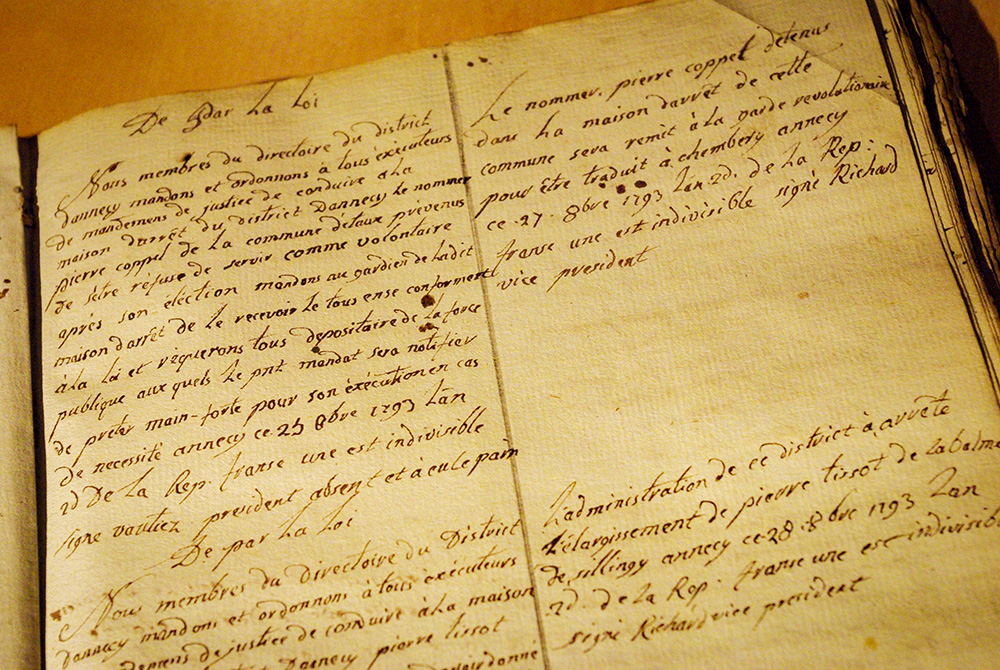
Why Visit?
For me, the Palais de l’Île isn’t just a historical site—it’s a symbol of Annecy’s soul.
Standing on the Pont Perreire, camera in hand, I’m always struck by how this fortress bridges the past and present.
Visiting its interior adds depth to the picture, revealing the lives and stories that shaped this magical town.
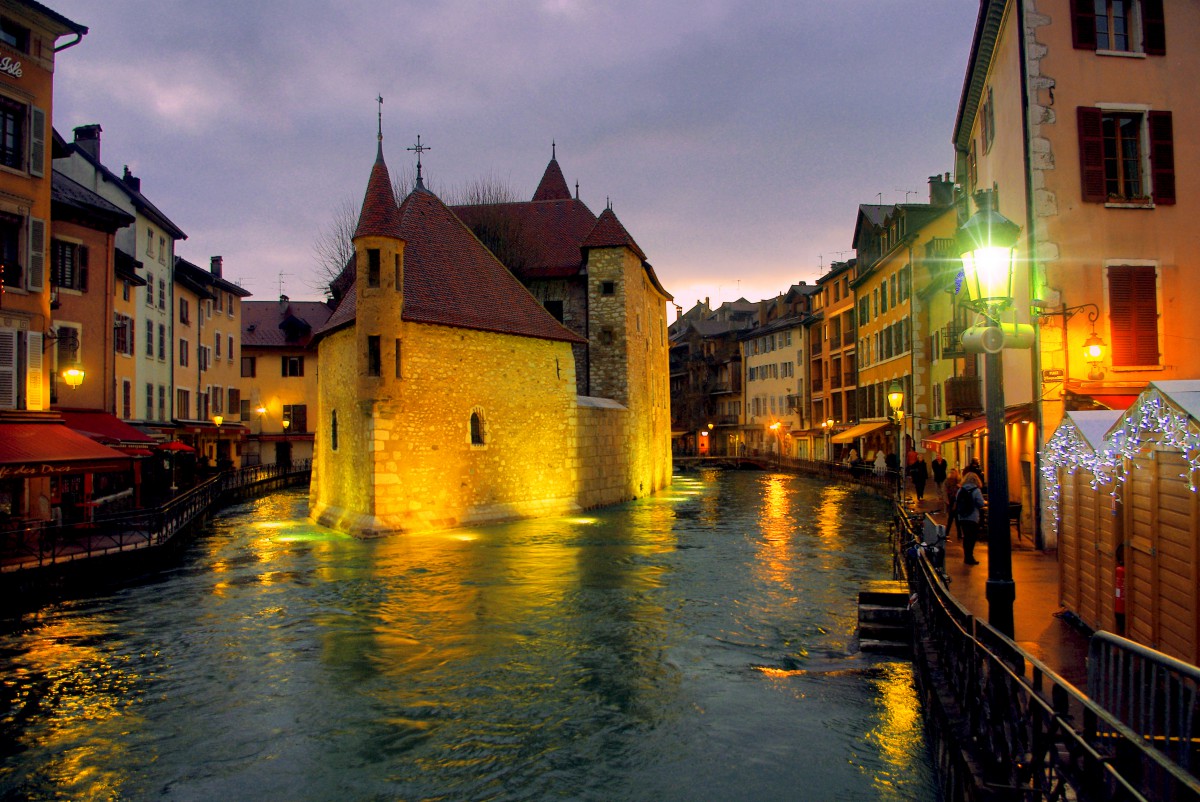
Whether you’re a history buff, a curious traveller, or simply someone who appreciates beauty, the Palais de l’Île is an experience you won’t forget.
So next time you find yourself in Annecy, don’t just admire its exterior. Step inside and let its walls whisper their tales.
Who knows? You might just fall in love with this little “stone ship” as much as I have.
Discovering Annecy’s Old Town
Annecy’s old town, fondly known as “La Venise des Alpes,” is a mesmerising maze of canals, cobblestone streets, and pastel-coloured facades.
Walking through it feels like stepping into a fairy tale.
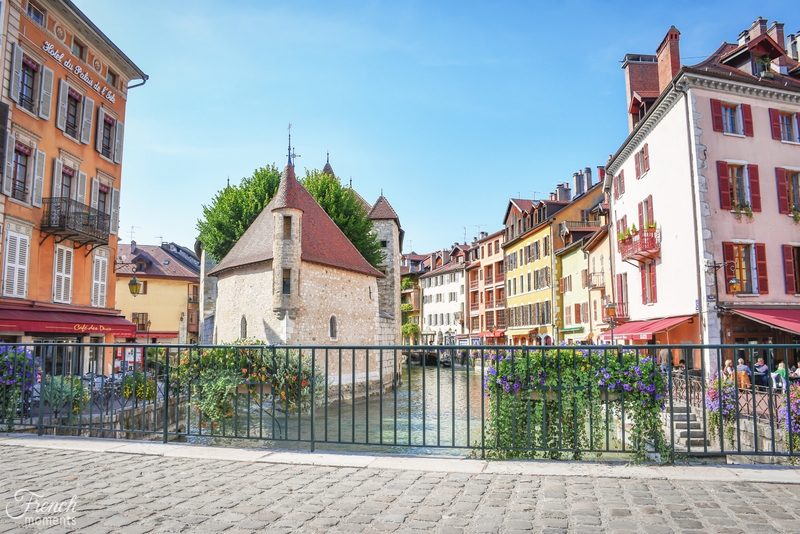
I’ve spent countless hours wandering its lanes, each corner revealing a new charm—a bustling market, a hidden courtyard, or a tranquil canal reflecting the town’s beauty.
One of my favourite spots is Rue Sainte-Claire, with its arched arcades and lively atmosphere.
Cafés and boutiques spill onto the street, tempting you to pause for a coffee or a browse.
The scent of fresh bread and Savoyard cheese drifts from nearby boulangeries, adding to the sensory delight.
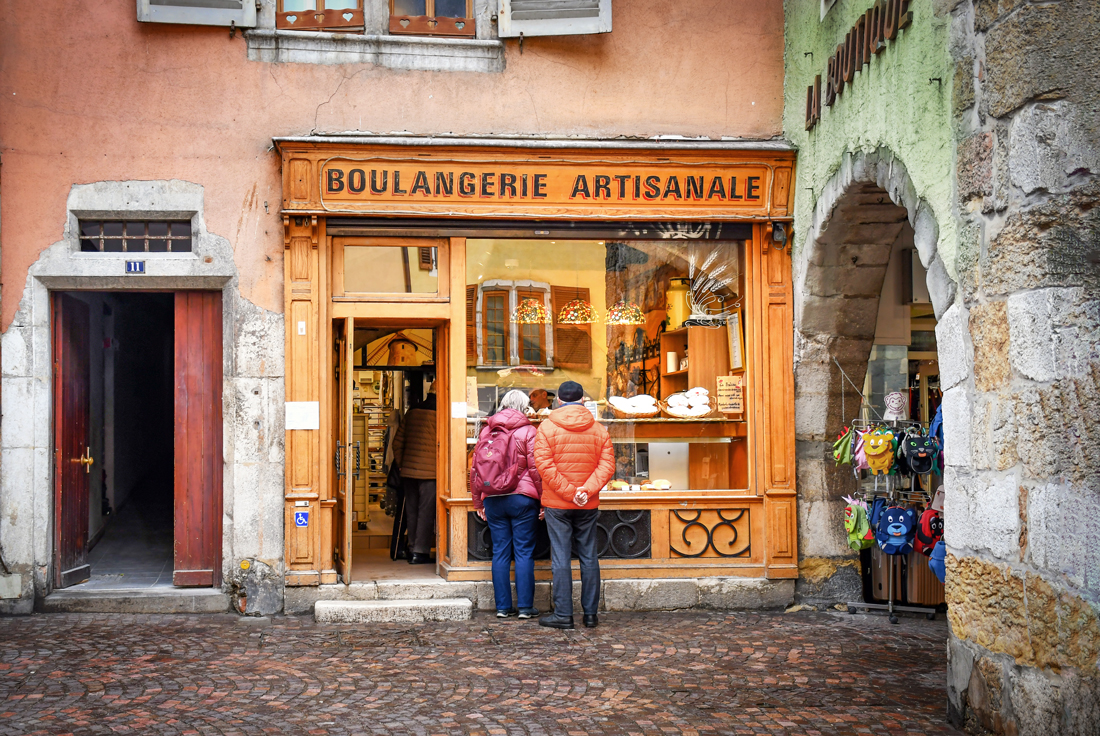
And then there’s the Canal du Thiou, its crystal-clear waters winding through the town like a sparkling ribbon.
Whether in the golden light of morning or under the twinkling lights at night, it’s a scene that never loses its magic.

Annecy’s old town also holds a rich history, with buildings like the Saint-Pierre Cathedral, the Saint-François-de-Sales Church and Annecy Castle offering glimpses into its past.
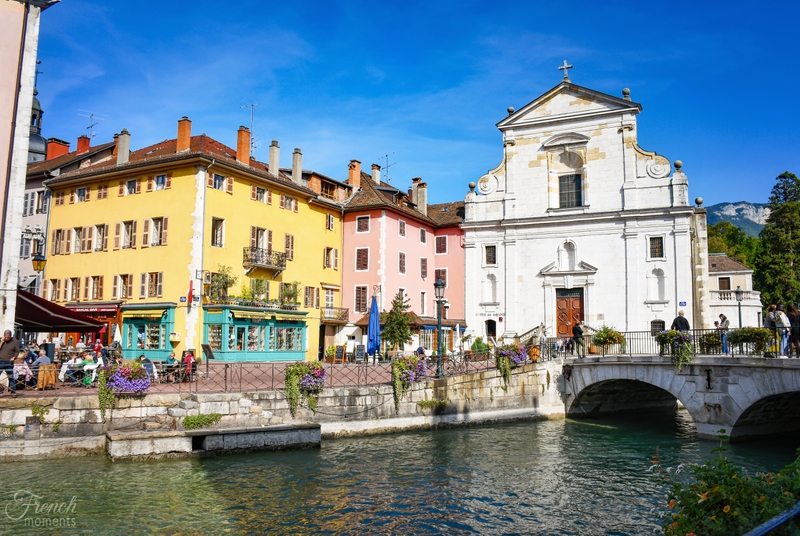

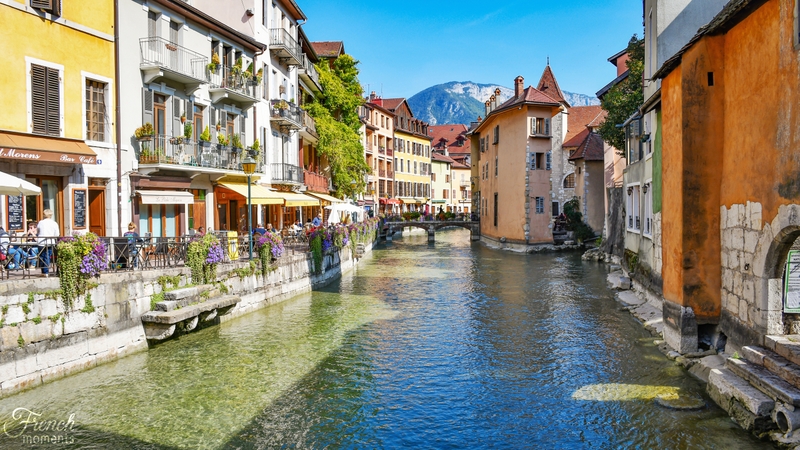
Every visit feels like a journey of discovery, and each return brings something new to love.
If the Palais de l’Île is the heart of Annecy, then its old town is the soul—together, they create an unforgettable experience that captures the essence of this enchanting city.
Find out more about Annecy
Our website offers a great number of articles about Annecy and its region.
Here are a few pages that might interest you:
- The old town of Annecy, the Venice of the Alps
- Our guide to Lake Annecy
- Top 15 places to see around Annecy
- Discover the Christmas Market of Annecy
- on our French blog: Couleurs d’Automne à Annecy
Where to stay in Annecy
You can choose from a wide range of accommodations in the region of Lake Annecy.
Click here for a list of hotels, campings and guest houses, or use the map below:
Liked this post? Pin it on Pinterest or share it on Facebook and X (Twitter):
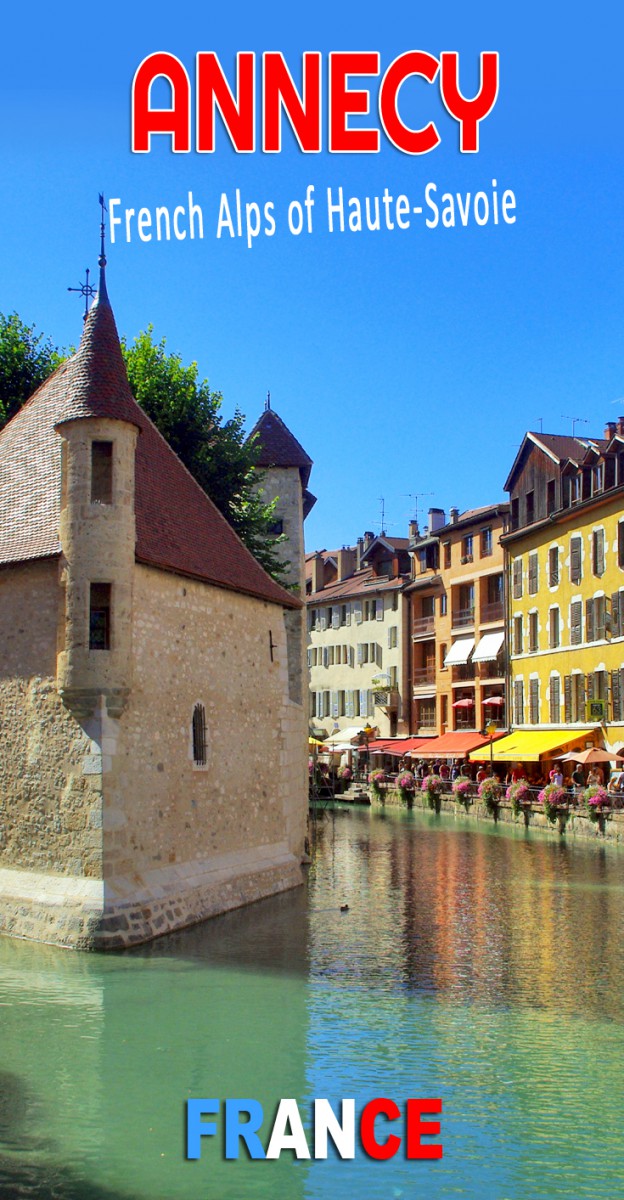
English-French Vocabulary
(f) for féminin, (m) for masculin, (adj) for adjective and (v) for verbs
- Alps = Alpes (f,p)
- Amadeus = Amédée
- archives = archives (f,p)
- barracks = caserne (f)
- canal = canal (m)
- castle = château (m)
- cell = cellule (f)
- chapel = chapelle (f)
- corridor = couloir (m)
- court house = cour de justice (f)
- court of auditors = cour des comptes (f)
- courtyard = cour (f)
- duke = duc (m)
- dungeon = prison (f)
- fortified house = maison fortifiée (f)
- French revolution = révolution française (f)
- Geneva = Genève
- gaoler = geôlier (m)
- imprisonment = emprisonnement (m)
- island = île (f)
- kitchen = cuisine (f)
- latrine = latrines (f,p)
- lawyer = avocat (m)
- mint = hôtel des monnaies (m)
- museum = musée (m)
- prison = prison (f)
- Savoy = Savoie (f)
- spiral staircase = escalier à vis (m)
- wing = aile (f)
- workshop = atelier (m)



